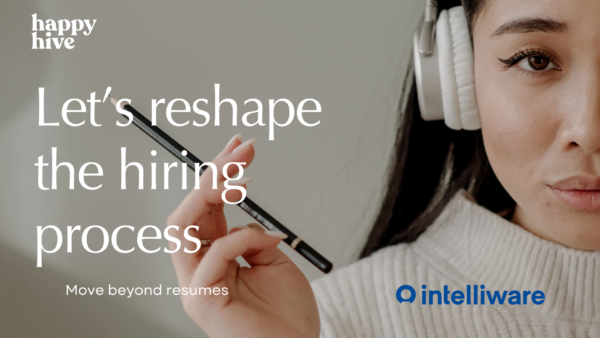Across regulated banking and insurance firms there is a tension between ambition and anxiety. Leaders are eager to accelerate work with artificial intelligence, yet many employees quietly worry that machines will sideline them. One survey shows that more than a third of workers fear losing their jobs to AI and 43% of the public thinks AI will personally harm them. Analysts, however, estimate that only 1.5% of jobs will actually disappear by 2030 while nearly 7% will be reshaped for the better. Closing this perception gap requires more than technical investment; it demands a human‑centric culture. Trust grows when leaders make AI’s role transparent, invest in employee skills and show that agents are tools to augment people rather than replace them.
“Transparency is not just a compliance checkbox; it is a human imperative.”

Agentic AI is here to augment, not replace the workforce
Agentic AI refers to self‑directed software capable of taking actions, interacting across systems, and working alongside people. Gartner predicts that 40% of enterprise applications will embed task‑specific agents by 2026 and that nearly every app will have an AI assistant by 2025. Capgemini research reinforces this momentum: 80% of large companies increased generative AI investment last year, and 24% already integrate these capabilities into operations. Early adopters report a 7.8% productivity gain and a 6.7% boost in customer engagement, suggesting that agents are driving measurable value rather than simply cutting costs.
These benefits arise because agents handle repetitive, rules‑based tasks while people focus on higher‑value work. In an insurance claims department, for example, an agent can gather evidence and draft initial decisions so adjusters concentrate on nuanced assessments. Across sectors, the goal is to redistribute work to improve quality and morale rather than eliminate jobs. Capgemini found that 62% of organizations are moving from chatbots to AI agents and 82% expect to deploy agents within three years, signalling a transition from simple assistants to complex ecosystems.
- Reduce repetitive work: Agents triage service tickets, reconcile records and manage procurement tasks, reducing bottlenecks and human error while freeing teams for strategic activities.
- Build strategic focus: By automating the transactional workload, agents allow specialists to focus on customer relationships, process innovation and long‑term planning.
- Embed compliance: Agents enforce policy rules, capture audit trails and produce standard reports, giving compliance teams greater visibility and reducing the risk of inadvertent violations.
The more disciplined an organisation is in configuring and monitoring its agents, the more confident its employees become in using AI as a collaborator. Since only a quarter of the public believes AI will benefit them, transparent governance is essential to close that gap.

Governance frameworks build confidence in regulated sectors
Regulated enterprises cannot embrace autonomous agents without clear oversight. The European Union’s AI Act requires human supervision and adaptive risk management for high‑risk systems, setting a bar for global best practice. Industry advisers warn that many organisations lack confidence in their controls and risk exposure without transparent governance. Trust grows when policy, technical guardrails and culture align.
“Enterprise leaders should view these benefits as a spectrum: the more an organization builds discipline around how agents are configured and monitored, the more confident employees become in their ability to use AI as a collaborator.”
To start, every agent needs an accountable owner and defined approval layers. High‑impact decisions should always require human sign‑off. Adaptive controls cap transaction limits, restrict configuration changes and trigger alerts when anomalies occur. Real‑time monitoring dashboards let supervisors see how agents make choices and intervene when necessary. Transparency also matters: decision logs must be immutable and accessible for audits, and teams should be able to explain which data drove a recommendation. Mature orchestration platforms centralise deployment, version control and policy enforcement, preventing rogue agents and ensuring compliance across financial services, healthcare and transportation. When employees see these controls in place and know who is accountable, they are more likely to embrace AI and less likely to fear it.

Upskilling and transparency transform adoption into collaboration
Empowering your workforce to work alongside AI agents requires two commitments: skill development and openness. Gartner projects that by 2029 nearly half of workers will need to create or manage agents, yet today 64% of the public expect AI to reduce jobs even though only a small fraction will disappear. The easiest way to turn fear into opportunity is through training that demystifies how agents work and makes their decisions transparent.
Effective upskilling focuses on practical knowledge—what data feeds an agent, how outputs are generated and what controls keep it within ethical bounds. Explainability dashboards and decision trees help employees see why the agent recommends one action over another. Training should be role‑specific, teaching claims adjusters how to override suggestions, finance officers how to interpret risk scores and customer service teams how to guide AI‑generated responses. Capgemini found that organisations using generative AI see productivity and customer engagement rise, but these gains materialize only when employees know how to harness the tools.
Transparency and communication go hand in hand. Employees deserve to know which processes are being automated, what approvals are required and how feedback loops refine models. Invite representatives from different functions into pilot programmes and iterate based on their input. Share stories where human judgement and agentic speed produced better outcomes; these narratives make the benefits tangible and build confidence across the organisation.
Orchestrating multi‑agent ecosystems enhances productivity and compliance
The promise of agentic AI grows as companies deploy multiple agents across departments. Without orchestration, however, agents can work at cross purposes and create shadow workflows. TEKsystems cautions that uncontrolled sprawl undermines compliance and erodes trust. Leaders should therefore design multi‑agent ecosystems with clear protocols and shared governance rules.
An orchestration layer coordinates agents and ensures they exchange data securely, follow the same policies and write to a common audit log. Capgemini reports that 48% of organizations already use multi‑agent systems and 82% expect to implement them within three years. The benefits are compelling: shared context improves decision quality, centralized monitoring builds resilience, and a unified platform simplifies scaling and auditing. To succeed, executives should define how agents interact with core systems, build a single governance platform for lifecycle management, and continually refine roles and models based on performance and regulatory change.
Electric Mind’s approach to human‑centric AI orchestration
Building on the promise of orchestrated ecosystems, Electric Mind partners with regulated enterprises to design responsible agentic systems that balance productivity with compliance. Our multidisciplinary teams blend deep engineering expertise with sector‑specific insight, allowing us to integrate agents into mission‑critical workflows without disrupting operations. We co‑create solutions with your teams rather than imposing generic playbooks, tailoring governance, risk controls and training to your regulatory pressures.
Electric Mind treats agent adoption as an ongoing journey. We align objectives with measurable outcomes such as faster claims processing or reduced compliance breaches, then architect multi‑agent ecosystems with transparent decision logs and human‑in‑the‑loop controls. Throughout deployment we upskill your workforce and demystify AI decision‑making so people trust the technology. This combination of engineered precision and human‑centred design is why regulated organisations rely on us to modernise responsibly.
Human-Centric AI Orchestration
In The Electric Mindset episode “ServiceNow: Now What?” Nick Dyment and Duke Osei talk about how agentic AI only works at scale when ownership, guardrails, and auditability are built in. They frame ServiceNow as the “control tower” for enterprise agents—cataloging each agent in the CMDB, attaching policies, logging inputs/decisions/outputs, and tying drift or incidents into change/incident management so humans stay in the loop.
Their take aligns with this blog’s emphasis on transparency and skills. Clear roles, policy-aligned prompts, and immutable decision logs reduce fear and raise trust; targeted upskilling turns agents into collaborators, not replacements. The conversation also looks ahead to multi-agent orchestration—shared context, coordinated handoffs, and a single governance layer that keeps speed and compliance moving together.
Listen: Electric Mindset – Season 1, Episode 5: ServiceNow: Now What?
Common questions
When regulated enterprises consider adopting autonomous agents, they often share similar concerns. This section answers the questions executives and team members most frequently ask about governance, risk, employee anxiety, training and multi‑agent orchestration. The goal is to provide concise guidance that complements the broader discussion while acknowledging the specificity of your own context.
How can we adopt AI agents without putting compliance at risk?
Begin with a risk assessment to decide which processes are suitable for automation and which require human oversight. Map agent actions to relevant regulations and build controls that enforce those rules automatically. Set approval thresholds so that high‑impact decisions always get human sign‑off, and centralise logging so audits are straightforward. Involve compliance teams early so policies evolve alongside technology.
What role should governance play in agentic AI adoption?
Governance supplies the scaffolding for adoption. It assigns ownership, defines risk tiers, sets approval workflows and ensures each agent follows a common standard. Without it, agents proliferate unchecked and compliance gaps appear. With it, organisations can experiment confidently, knowing that every agent operates within a transparent, enforced policy and that ethics are non‑negotiable.
How do we prevent employees from fearing that AI will replace them?
Leaders need to be honest about the purpose of automation: agents tackle repetitive tasks so people can focus on strategic work. Share evidence that only a small portion of jobs will disappear and showcase examples where AI enhanced human roles. Invite employees into pilot projects so they can influence design and see the technology firsthand. Training that teaches oversight and feedback also helps fear give way to ownership.
How can organizations upskill their workforce to collaborate effectively with AI agents?
Build role‑specific training programmes that explain what agents do, how they make decisions and what controls keep them in bounds. Teach employees how to provide feedback, override decisions and interpret outputs. Encourage cross‑functional learning so finance, compliance and IT speak a shared language, and offer refreshers as models and regulations evolve. Frame training as career growth: nearly half of workers will need to create or manage AI agents by 2029, so skills built now pay dividends later.

.png)






